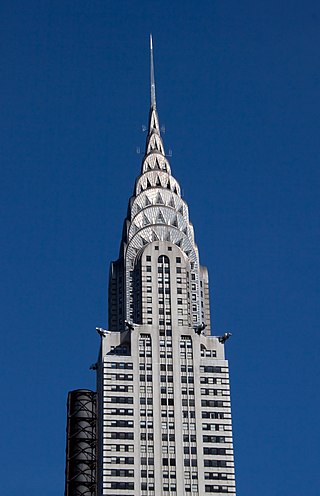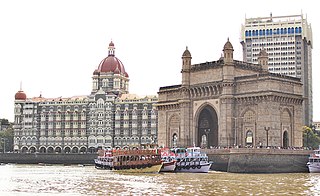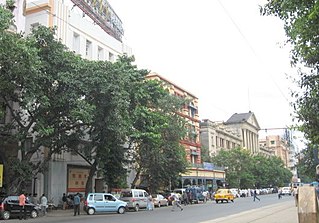Related Research Articles

Art Deco, short for the French Arts Décoratifs, and sometimes referred to simply as Deco, is a style of visual arts, architecture, and product design, that first appeared in France in the 1910s, and flourished in the United States and Europe during the 1920s to early 1930s. Through styling and design of the exterior and interior of anything from large structures to small objects, including how people look, Art Deco has influenced bridges, buildings, ships, ocean liners, trains, cars, trucks, buses, furniture, and everyday objects like radios and vacuum cleaners.

Charles-Édouard Jeanneret, known as Le Corbusier, was a Swiss-French architect, designer, painter, urban planner and writer, who was one of the pioneers of what is now regarded as modern architecture. He was born in Switzerland and became a French citizen in 1930. His career spanned five decades, in which he designed buildings in Europe, Japan, India, as well as North and South America. He considered that "the roots of modern architecture are to be found in Viollet-le-Duc".

Kolkata is the capital and largest city of the Indian state of West Bengal. It lies on the eastern bank of the Hooghly River, 80 km (50 mi) west of the border with Bangladesh. It is the primary financial and commercial center of eastern and northeastern India. Kolkata is the seventh most populous city of India with an estimated city proper population of 4.5 million (0.45 crore). It is the centre of the Kolkata Metropolitan Region, one of the most populous metropolitan area in the world with a population of over 15 million residents. Kolkata is the de facto cultural capital of India and historically and culturally significant city in the historic region of Bengal. It is the second largest Bengali-speaking city in the world. It has the highest number of nobel laureates among all cities in India.

Modern architecture, or modernist architecture, was an architectural movement or architectural style based upon new and innovative technologies of construction, particularly the use of glass, steel, and reinforced concrete; the idea that form should follow function (functionalism); an embrace of minimalism; and a rejection of ornament. It emerged in the first half of the 20th century and became dominant after World War II until the 1980s, when it was gradually replaced as the principal style for institutional and corporate buildings by postmodern architecture. According to Le Corbusier the roots of the movement were to be found in the works of Eugène Viollet le duc.

A resident of Mumbai is called a Mumbaikar. People prefer to stay close to a railway station for easy access to the metropolis. Many city-dwellers lead a fast-paced life with very little time for other activities owing to a significant amount of time spent on daily commuting.

Chennai architecture is a confluence of many architectural styles. From ancient Tamil temples built by the Pallavas, to the Indo-Saracenic style of the colonial era, to 20th-century steel and chrome of skyscrapers. Chennai has a colonial core in the port area, surrounded by progressively newer areas as one travels away from the port, punctuated with old temples, churches and mosques.

Esplanade is a neighbourhood of Central Kolkata, in Kolkata district in the Indian state of West Bengal. This is not a conventional esplanade in the sense that the place is not exactly situated alongside a waterbody. However, the Ganga river (Ganges), also known as Hooghly river, flows nearby.

Tollygunge is a locality of South Kolkata, in West Bengal, India. It is known for being the center of Indian Bengali-language cinema, with filming locations used for other regional Indian films.

The Architecture of Bengal, which comprises the modern country of Bangladesh and the Indian states of West Bengal, Tripura and Assam's Barak Valley, has a long and rich history, blending indigenous elements from the Indian subcontinent, with influences from different parts of the world. Bengali architecture includes ancient urban architecture, religious architecture, rural vernacular architecture, colonial townhouses and country houses and modern urban styles. The bungalow style is a notable architectural export of Bengal. The corner towers of Bengali religious buildings were replicated in medieval Southeast Asia. Bengali curved roofs, suitable for the very heavy rains, were adopted into a distinct local style of Indo-Islamic architecture, and used decoratively elsewhere in north India in Mughal architecture.

The Eros Cinema is an Art Deco style, now defunct, cinema theatre located in Cambata Building at Churchgate, Mumbai, India. It has a seating capacity of 1,204 people per show.
The architecture of Mumbai blends Gothic, Victorian, Art Deco, Indo-Saracenic & Contemporary architectural styles. Many buildings, structures and historical monuments remain from the colonial era. Mumbai, after Miami, has the second largest number of Art Deco buildings in the world.

Metro Cinema or Metro Cinemas is a uniplex cinema hall and a heritage building located in Jawahar Lal Nehru Road (Esplanade), Kolkata, West Bengal, India. This theatre was opened by Metro-Goldwyn-Mayer in 1935. It is currently owned by a Mumbai-based firm and is undergoing a renovation to be converted into a multiplex theatre. The building is located in the posh Esplanade area of Kolkata, right at the heart of the city. It is a heritage structure and a very famous landmark of the city of Kolkata. And one of the many famous cinema halls in the Esplanade area of Central Kolkata.

The Victorian Gothic and Art Deco Ensembles of Bombay is a collection of 19th-century Victorian Revival public and 20th-century Mumbai Art Deco private buildings in the Fort precinct of Mumbai. This ensemble was declared a UNESCO World Heritage Site in 2018.
Art Deco Mumbai (ADMT) is a public charitable trust that is actively involved in spreading awareness about Mumbai's Art Deco heritage since May 2016. It is a digital initiative that uses social media and a website to showcase the built heritage. The website is the only repository of information on Art Deco in Mumbai in the public domain.

The Art Deco in Mumbai, India style is a notable feature of the architecture of the city. It was used primarily for office buildings, residences and movie theaters, during a period when India was part of the British Empire. On 30 June 2018, an ensemble of such buildings were officially recognized as a World Heritage site by the UNESCO World Heritage committee held in Bahrain as the Victorian and Art Deco Ensemble of Mumbai.

A distinct Indo-Islamic architecture style with local contribution is reflected in the historical buildings of Hyderabad, making it the first and "Best Heritage City of India" as of March 2012. The city houses many famous historical sites constructed during Qutb Shahi and Asaf Jahi period, including various mosques and palaces.
Abha Narain Lambah is an Indian conservation architect whose eponymous architectural practice has restored several of India's UNESCO World Heritage Sites like the Ajanta Caves, Golconda Fort and Mahabodhi Temple, and Mumbai's Victorian buildings like the Crawford Market, Royal Opera House, Asiatic Society of Mumbai Town Hall and Knesset Eliyahoo Synagogue.

The Currency Building is an early 19th-century building in the B. B. D. Bagh central business district of Kolkata in West Bengal, India. The building was originally built in 1833 to house the Calcutta branch of the Agra Bank. In 1868, it was converted for use by the Office of the Issue and Exchange of Government Currency, an office of the Controller of the Currency under the British Raj. From 1935 until 1937, the Reserve Bank of India (RBI) used the building as its first central office. The building remained in use, and was used at one time by the Central Public Works Department (CPWD) as a storehouse. Authorities decided to demolish it in 1994.

The Madras High Court is a High Court in India. It has appellate jurisdiction over the state of Tamil Nadu and the union territory of Puducherry. It is located in Chennai, and is the third oldest high court of India after the Calcutta High Court in Kolkata and Bombay High Court in Mumbai. The Madras High Court is one of four charter high courts of colonial India established in the four Presidency Towns of Madras, Bombay, Allahabad and Calcutta by letters patent granted by Queen Victoria, dated 26 June 1862. It exercises original jurisdiction over the city of Chennai, as well as extraordinary original jurisdiction, civil and criminal, under the letters patent and special original jurisdiction for the issue of writs under the Constitution of India. Covering 107 acres, the court complex is one of the largest in the world, second only to the Supreme Court of the United Kingdom. The four-storey administrative building attracts hundreds of litigants every day.

The Esplanade Mansions is a heritage building located in the Indian city of Kolkata, on the Esplanade Row and Marx Engels Beethi Road crossing, opposite to the Raj Bhavan. It was one of the buildings owned by Jewish businessman David Elias Ezra. The residential building was built in the Art Nouveau architecture style. Today it is owned by Life Insurance Corporation and houses commercial, railways and other government offices.
References
- 1 2 "Art Deco in South Kolkata". Paper Planes. 9 June 2023. Retrieved 4 July 2023.
- ↑ Bose, Shivashish (2 September 2015). "State and management of architectural heritage in Kolkata". Journal of Architectural Conservation. 21 (3): 178–194. doi:10.1080/13556207.2016.1142754. ISSN 1355-6207.
- 1 2 3 4 Sen, Siddhartha (2015). Colonizing, Decolonizing, and Globalizing Kolkata: From a Colonial to a Post-Marxist City. Amsterdam University Press. ISBN 9789048530687.
- 1 2 3 4 Ghosh, Deepanjan (12 December 2017). "City secrets: Art Deco architecture spread across Kolkata, thanks to a state law – and jugaad". Scroll.in. Retrieved 4 July 2023.
- ↑ Dasgupta, Reshmi (7 May 2013). "It is time India celebrates its Art Deco heritage". The Economic Times. ISSN 0013-0389 . Retrieved 4 July 2023.
- ↑ "The old Calcutta chromosomes". The Hindu. 27 June 2015. ISSN 0971-751X . Retrieved 4 July 2023.
- ↑ Banka, Neha. "The battle to save Kolkata's crumbling heritage buildings". www.aljazeera.com. Retrieved 4 July 2023.
- 1 2 3 Chaudhuri, Amit (2 July 2015). "Calcutta's architecture is unique. Its destruction is a disaster for the city". The Guardian. ISSN 0261-3077 . Retrieved 4 July 2023.
- ↑ artincontext (17 December 2021). "Art Deco - A Summary of the Art Deco Era". artincontext.org. Retrieved 4 July 2023.
- ↑ "Chicago to Calcutta: The romance of art deco". www.telegraphindia.com. Retrieved 4 July 2023.
- ↑ "The Architecture and Development of New York City with Andrew S. Dolkart". 5 January 2019. Archived from the original on 5 January 2019. Retrieved 4 July 2023.
- ↑ "Miami Beach: an icon of Art Deco and bling". 6 October 2022. Retrieved 4 July 2023.
- ↑ Thomas, Maria (27 June 2017). "Mumbai has the world's second-largest collection of Art Deco buildings but no one notices them". Quartz. Retrieved 4 July 2023.
- ↑ "The battle to save Mumbai's art deco buildings". BBC News. 21 June 2017. Retrieved 4 July 2023.
- ↑ "Art Dekho – a history of Mumbai's iconic Art Deco architecture". The Indian Express. 30 October 2022. Retrieved 4 July 2023.
- ↑ Billauer, Barbara Pfeffer (2012). "Le Corbusier, the Occult and How Art Deco Began". Art Deco Society of Washington. 28 (3) – via SSRN.
- ↑ valenting (24 June 2020). "Pure architecture legacy: Le Corbusier and his influence on Art Deco". MOUVEX 1911. Retrieved 4 July 2023.
- ↑ Gupta, Samita (1991). "Sris Chandra Chatterjee: 'The quest for a national architecture". The Indian Economic & Social History Review. 28 (2): 187–201. doi:10.1177/001946469102800204. ISSN 0019-4646.
- ↑ "Art Deco makes a comeback to Kolkata after five decades". The Times of India. 1 April 2018. ISSN 0971-8257 . Retrieved 4 July 2023.
- ↑ "There goes the neighbourhood: Author Amit Chaudhuri talks about Kolkata and its decaying heritage". Firstpost. 5 March 2016. Retrieved 4 July 2023.
- ↑ "The crumbling mansions of India's 'City of Joy'". www.bbc.com. Retrieved 4 July 2023.
- ↑ "The role of small promoters in Kolkata's housing transformation". India Housing Report. 23 March 2021. Retrieved 4 July 2023.
- ↑ "Realty check to preserve traditional neighbourhoods". The Times of India. 28 March 2017. ISSN 0971-8257 . Retrieved 4 July 2023.
- ↑ "Saving charm of old Kolkata". The Hindu. 1 April 2017. ISSN 0971-751X . Retrieved 4 July 2023.
- ↑ Sikhwal, Abhishek (10 August 2017). "An Instagram project is preserving Kolkata's gorgeous buildings, before they vanish for good". Scroll.in. Retrieved 4 July 2023.
- ↑ "From the Press | Calcutta Heritage Collective". www.calcuttaheritagecollective.com. Retrieved 4 July 2023.